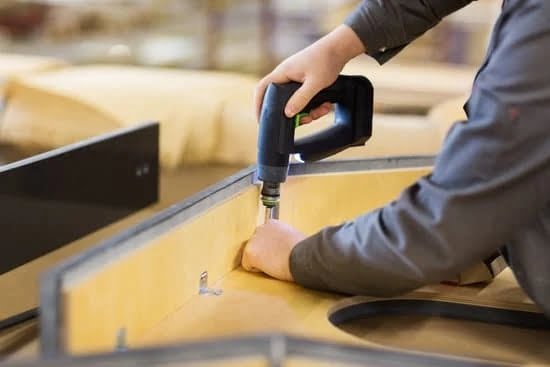Are you ready to explore the world of woodworking and embark on your first project? If you’re wondering, “what should my first woodworking project be,” you’ve come to the right place. Whether you’re looking to create something practical or decorative, diving into woodworking can be a rewarding experience.
Before jumping into your first project, it’s important to familiarize yourself with the basics of woodworking, including the tools and materials you’ll need. Understanding these fundamentals will set you up for success and ensure that your first project is a memorable and enjoyable experience.
In this article, we’ll provide valuable insights into choosing the right first woodworking project, offering simple project ideas for beginners, a step-by-step guide to get you started, tips for success, and inspiration for finding woodworking project ideas. By the end of this article, you’ll feel confident in taking your first steps into the world of woodworking and be ready to continue building on your skills with more advanced projects.
The Basics of Woodworking
Woodworking is an incredibly rewarding and satisfying hobby that allows individuals to unleash their creativity and craft beautiful, functional pieces from wood. Before diving into your first woodworking project, it’s important to familiarize yourself with the essential tools and materials you’ll need. Here’s a list of the basic items every beginner should have in their woodworking arsenal:
- Measuring tape: An absolute necessity for accurately measuring and marking wood for cutting and assembly
- Saw: Whether it’s a handsaw or a power saw, having the right tool for cutting wood is essential
- Hammer: A versatile tool for driving nails, adding dowels, or making adjustments during assembly
- Sanding block or electric sander: A smooth finish is crucial for woodworking projects, so having a reliable method for sanding is important
- Drill and drill bits: Necessary for making holes for screws or dowels
- Clamps: Used to hold wood pieces together firmly during assembly
- Safety equipment: This includes goggles, ear protection, and a dust mask to keep you safe while working with wood
In addition to the tools listed above, there are several essential materials that every aspiring woodworker should have access to:
- Quality lumber: Choose the right type of wood for your project based on its intended use and appearance
- Fasteners (nails, screws, glue): These are necessary for assembling your project securely
By investing in these basic tools and materials, you’ll be well-equipped to take on your first woodworking project with confidence. Remember that while quality tools & materials do make a difference in your end product – you don’t have to purchase them all at once. You can start out small with just thee most basic essentials.
The Importance of Choosing the Right First Project
Choosing the right first woodworking project is crucial for beginners who are just starting to explore the world of woodworking. It can set the tone for your entire woodworking journey and help you build confidence as you develop your skills. But with so many options available, it can be challenging to determine what your first project should be.
Consider Your Skill Level
When choosing your first woodworking project, it’s important to consider your current skill level. If you’re completely new to woodworking, start with a simple project that doesn’t require advanced techniques or specialized tools. As you gain more experience and confidence, you can gradually take on more complex projects.
Think About Your Interests
Another factor to consider when choosing your first woodworking project is your interests. Think about the types of items you would like to create and use in your own home. Whether it’s a small shelf, a picture frame, or a simple stool, selecting a project that aligns with your interests will keep you motivated and engaged throughout the process.
Focus on Learning Fundamentals
Your first woodworking project should also focus on teaching you the fundamental skills and techniques that form the foundation of woodworking. Look for projects that allow you to practice measuring, cutting, drilling, sanding, and assembly. Mastering these basic skills will give you a solid understanding of woodworking principles and prepare you for more advanced projects in the future.
Simple Woodworking Projects for Beginners
When starting out in woodworking, it’s important to choose the right first project. The key is to start with something simple that will allow you to hone your skills and build your confidence. One great option for beginners is a basic wooden box.
This project will give you the opportunity to practice measuring, cutting, and assembling pieces of wood. Additionally, a wooden box can be personalized with different finishes or decorative touches, making it a versatile and rewarding first project.
Another straightforward woodworking project for beginners is a wooden serving tray. This project typically involves cutting a piece of wood to size, adding handles, and applying a finish. It’s a practical item that you can use in your own home or give as a gift. Plus, making a serving tray will introduce you to basic techniques like sanding and drilling.
For those interested in creating something decorative, consider making a set of wooden coasters. This project allows beginner woodworkers to experiment with different types of wood and learn how to apply protective finishes such as varnish or polyurethane. Coasters are also an excellent first project because they require minimal materials and can be completed relatively quickly.
| Woodworking Project | Description |
|---|---|
| Wooden Box | A basic project that allows beginners to practice measuring, cutting and assembly |
| Serving Tray | An introduction to sanding, drilling and applying finishes |
| Wooden Coasters | A decorative item requiring minimal materials and quick completion time |
Step-by-Step Guide to Creating Your First Woodworking Project
When starting out in woodworking, it’s important to choose a simple yet satisfying project that will help you build your skills and confidence. Here are some step-by-step instructions for creating your first woodworking project:
1. Choose the right project: The key to a successful first woodworking project is choosing something that matches your skill level and interests. Consider starting with a basic project such as a cutting board, picture frame, or simple shelf. These projects will allow you to focus on mastering fundamental woodworking skills without feeling overwhelmed.
2. Gather the necessary tools and materials: Before getting started, make sure you have all the tools and materials you need for your chosen project. Basic tools for woodworking include a saw, hammer, measuring tape, sandpaper, and wood glue. As for materials, you’ll need quality wood that’s suitable for your project, such as pine, cedar, or oak.
3. Follow the step-by-step instructions: Once you have everything you need, carefully read through the instructions for your chosen project. Take your time to understand each step before moving forward. Pay close attention to measurements and angles to ensure precision in your work.
4. Practice safety measures: Always prioritize safety when working with wood and power tools. Wear appropriate safety gear such as goggles and ear protection. Be mindful of where you place your hands when operating machinery and always unplug power tools when making adjustments.
5 Simple Woodworking Projects for Beginners
Tips for Success: Common Mistakes to Avoid
Tips for Success
When starting out with woodworking, it’s important to be aware of some common mistakes that beginners often make. By learning from these errors, you can save time, money, and frustration as you embark on your first woodworking project.
One common mistake to avoid is not taking the time to familiarize yourself with the tools and materials you’ll be using. Before starting your project, take the time to learn about each tool and its proper use. Additionally, ensure that you have all the necessary materials and supplies before beginning your project. This will help prevent any unnecessary delays or interruptions once you’ve started working.
Another mistake that many beginners make is skipping the proper measurements and planning stages. It’s crucial to accurately measure and plan every step of your project to ensure precision and accuracy in your final product. Rushing through this stage can lead to costly mistakes down the line.
Lastly, one of the most common mistakes for beginners is attempting a complex or advanced project as their first woodworking endeavor. It’s important to start with simple projects that match your skill level and gradually work your way up as you gain more experience and confidence in your abilities.
In summary, being mindful of these common mistakes can help set you up for success in your first woodworking project. Taking the time to learn about tools and materials, accurately measuring and planning, and starting with simple projects can make a significant difference in the outcome of your work.
| Mistake | Impact |
|---|---|
| Skipping proper measurements | Costly mistakes down the line |
| Not familiarizing with tools & materials | Unnecessary delays or interruptions during work |
| Attempting complex projects | Loss of confidence due to early failures |
Finding Inspiration
When starting out in woodworking, finding inspiration for your first project can be a daunting task. However, there are plenty of resources available to help guide you in the right direction. Whether you’re looking for practical home improvement projects or decorative items to showcase your new skills, there are several avenues to explore.
Woodworking Magazines and Books
One of the best places to find inspiration for woodworking projects is through magazines and books dedicated to the craft. These publications often feature step-by-step guides, project ideas, and tips from experienced woodworkers. From simple furniture pieces to intricate wooden sculptures, you can find a wide range of project ideas to suit your skill level and interests.
Online Woodworking Communities
The internet is a treasure trove of woodworking project ideas, thanks to the numerous online communities and forums dedicated to the craft. Websites like Pinterest, Instructables, and woodworking subreddits on Reddit are great places to discover unique and creative project ideas shared by fellow woodworkers. You can also join online woodworking groups on social media platforms to connect with like-minded individuals and gain inspiration from their projects.
Local Woodworking Workshops and Classes
Attending local woodworking workshops or classes can provide you with an opportunity to see different types of projects up close and get hands-on experience creating them. In addition to learning new techniques and skills, you will also have the chance to interact with other woodworkers and exchange ideas. Many workshops also offer pre-made project kits that are ideal for beginners looking for their first woodworking project.
By exploring these various sources of inspiration, you can find the perfect first woodworking project that aligns with your interests, skill level, and available tools and materials. Remember that starting small is key when embarking on your woodworking journey, so choose a project that is manageable yet still challenging enough for you to learn new skills along the way.
Next Steps
So you’ve completed your first woodworking project and now you’re ready to take your skills to the next level. But what should your next woodworking project be? As a beginner, it’s important to continue building on the skills you’ve already learned while also challenging yourself with new techniques and designs. Here are a few ideas for more advanced woodworking projects that will help you grow as a woodworker.
One option for a more advanced woodworking project is to build a piece of furniture such as a simple table or shelf. These projects will require more precise measurements and joinery techniques, giving you the opportunity to practice your woodworking skills in a more complex setting. Additionally, building furniture can be incredibly rewarding as it allows you to create something functional and beautiful for your home.
Another idea for an advanced woodworking project is to try your hand at making intricate wooden boxes or containers. This type of project will push you to focus on precision and attention to detail, as well as introducing you to the art of creating decorative and functional pieces. Wooden boxes can serve many purposes, from storage to display, making them a versatile and valuable addition to your woodworking portfolio.
Lastly, consider taking on a challenging woodworking project such as creating custom wooden utensils or cutting boards. Not only will these projects refine your woodworking skills, but they also provide opportunities for creativity and experimentation with different types of wood and finishes. Plus, handmade wooden utensils and cutting boards make wonderful gifts for friends and family, showcasing your newfound expertise in woodworking.
Conclusion and Encouragement
In conclusion, starting your woodworking journey can be an exciting and rewarding experience. By familiarizing yourself with the basics of woodworking, choosing the right first project, and following a step-by-step guide, you can embark on this creative and fulfilling endeavor with confidence.
Remember that mistakes are part of the learning process, so don’t be discouraged if things don’t go perfectly at first. With patience and practice, you will improve your skills and develop a deeper understanding of this timeless craft.
As a beginner, it’s essential to start with simple woodworking projects that match your skill level. Look for straightforward designs that require basic tools and materials.
Whether it’s a small shelf, a picture frame, or a simple cutting board, these projects will help you gain valuable experience and build a strong foundation for more advanced endeavors in the future. Don’t rush into complex projects before mastering the fundamentals – take your time to hone your skills and enjoy the process.
Lastly, finding inspiration for your woodworking projects is key to staying engaged and motivated. Whether it’s through books, online tutorials, or local woodworking clubs, surround yourself with resources that fuel your creativity. Additionally, don’t hesitate to seek guidance from experienced woodworkers who can offer valuable advice and support as you navigate through your first projects. Embrace this new venture wholeheartedly and remember that every masterpiece starts with a single cut – so pick up those tools and start creating.
Frequently Asked Questions
What Woodworking Project Is Most Profitable?
The profitability of a woodworking project can vary depending on various factors such as the cost of materials, time required for completion, and demand for the finished product.
Generally, items such as custom furniture pieces, high-quality wooden crafts, or specialty items like cutting boards or decorative boxes tend to be more profitable due to their unique nature and potential for customization.
What Are the 5 Steps in Planning Your Wood Work Project?
When planning a woodworking project, there are typically five key steps to follow: first, define the project’s purpose and desired outcome; second, create a detailed design or blueprint that outlines measurements and materials needed; third, gather all necessary tools and materials for the project; fourth, carefully measure and cut all materials according to the design plan; fifth, assemble and finish the project according to specifications.
What Woodworking Items Sell the Best?
The best-selling woodworking items often include practical household items like kitchen utensils (such as wooden spoons or spatulas), home decor pieces like shelves or picture frames, children’s toys made of wood, and custom furniture pieces such as tables or chairs. Items that are both functional and aesthetically pleasing tend to have high demand in the market.
Additionally, seasonal items like outdoor furniture or holiday decorations can also sell well at certain times of the year.

Hi everyone! I’m a woodworker and blogger, and this is my woodworking blog. In my blog, I share tips and tricks for woodworkers of all skill levels, as well as project ideas that you can try yourself.





